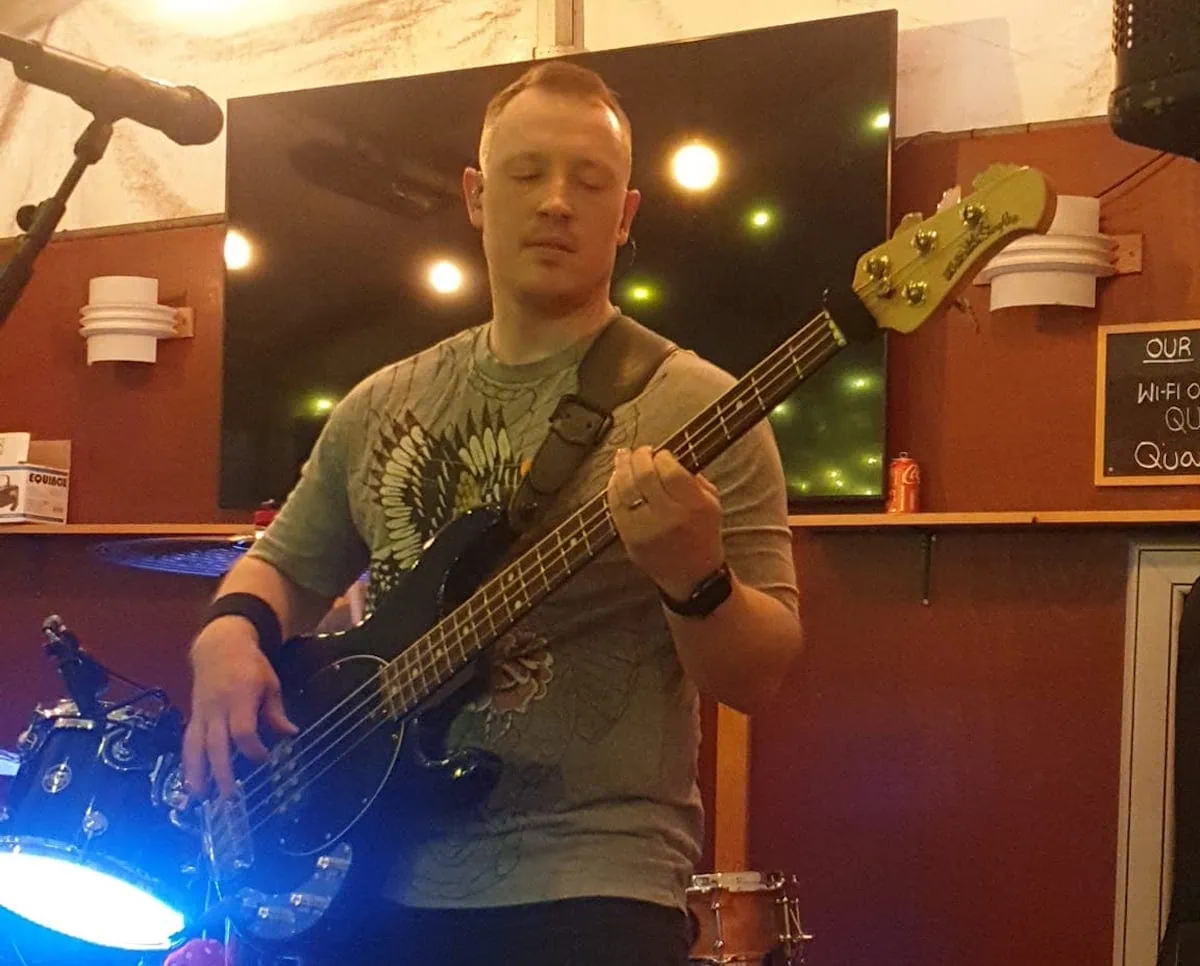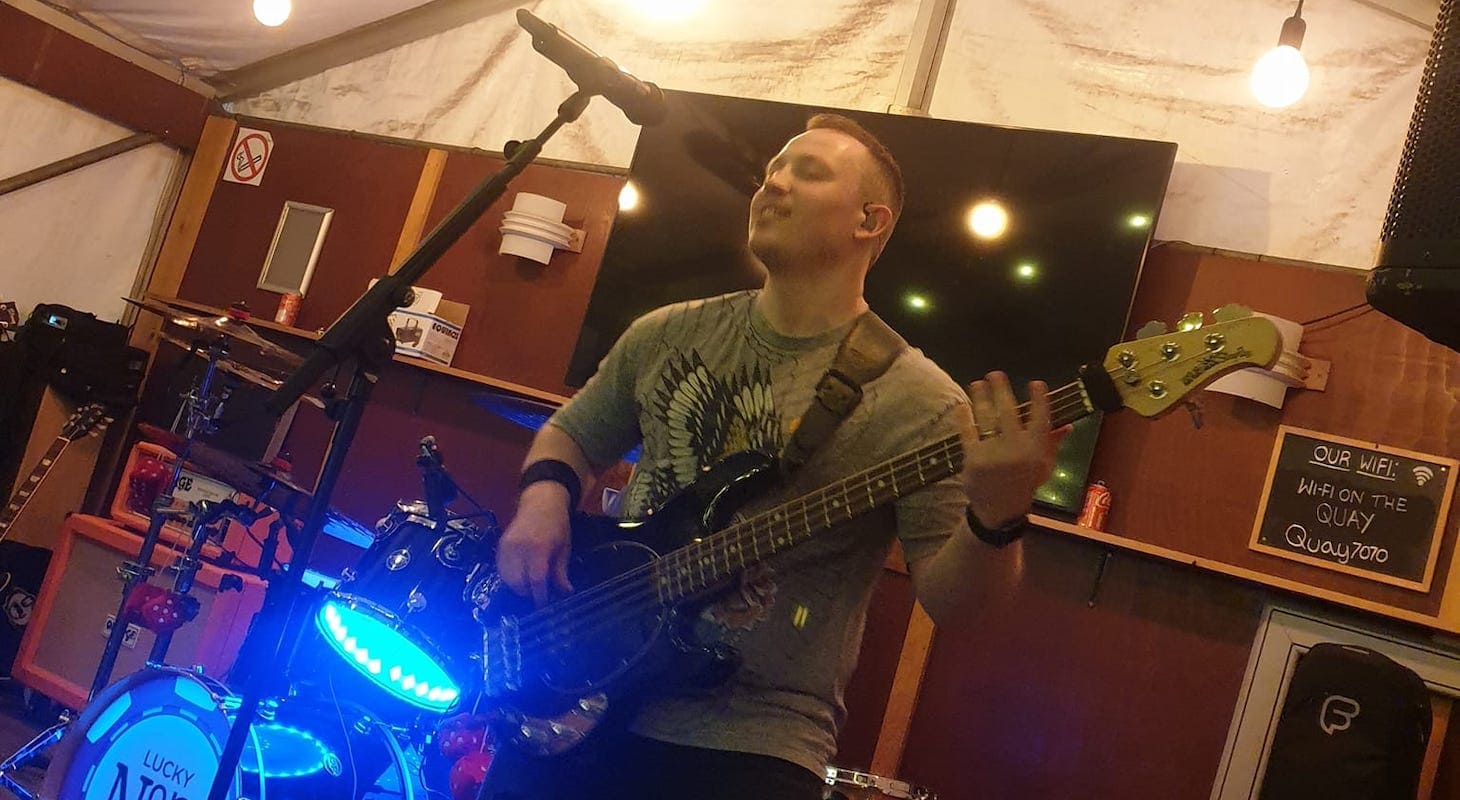Lemmy, Paul McCartney, Geddy Lee – apart from being in some of the biggest bands ever, these three musicians have something else in common: they all pull double duty as bassists and frontmen.
But how did they learn how to sing and play bass at the same time? Just like any other skill, it takes time to perfect. But like other skills, there are also tips and tricks to make that process easier.
Table of Contents
Tips for Learning to Sing and Play Bass at the Same Time
Baby Steps
Learning any new skill will always start the same, with something simple before working your way up.
Start with songs that have very simple bass and vocal melodies. Happy Birthday is perhaps the best starting point since the bass and vocal melodies are very similar. This will help you get used to focusing on two melodies at the same time.
It also helps if you start with something that you feel motivated to play and sing simultaneously, right from the get go. In my case, it was ‘When I Come Around’ by Green Day, which is not too far behind ‘Minority’ in my all-time-favorite Green Day bass-lines.
Hum Before You Sing
You might find it a bit awkward to form syllables at first. If you’re struggling to form words while playing, try simply humming the vocal melody.
I have also found that substituting the words with Do Re Mi Fa So La Ti is a very good exercise. This should quickly make you comfortable enough to eventually sing words.
Distraction is Good
Because you need to focus on two different things at once and our brains aren’t very good at that, you need to learn how to do it.
A good exercise is to play bass while doing something else. I usually watch TV or read. It’s important that you don’t go into autopilot while playing. The point of the exercise is to focus on what you’re doing while thinking about what you’re playing.
Master One Before the Other
If you’re struggling with a song, try learning the bass part first. If you can play the bass part practically blindfolded, it should be fairly easy to then sing over it.
If a song is particularly difficult, I would suggest mastering the bass and the vocals separately before putting them together.
Commit the Song to Muscle Memory

When I was growing up, a teacher told me that the more you understand, the less you have to remember.
Playing an instrument is hard enough. Singing while doing it makes it harder, but there’s no shortage of singing bass players out there. In fact, many of them play advanced, challenging bass lines while singing on stage.
When I think of a singing bass player, I think of Gene Simmons, Paul McCartney, or Phil Lynott. I think of Lemmy and Geddy Lee.
None of those bass players stuck to simple root-note parts, and managed to sing over their bass lines. Most bassists can’t even play the bass parts to Rush songs, let alone sing along while doing so!
What’s the secret?
Muscle memory.
If you’ve done any repeated action for long enough, you’ve probably “zoned out” while performing the action. You don’t think “how do I walk and open a door at the same time.” You simply do it.
Our brains like to minimize workload by, once we repeat an action enough times, ensuring that we can run said action on mental autopilot. It’s just like taking the same route to work or school every day, zoning out on the way, and getting to your destination only to realize you don’t remember the journey.
You can use this feature to improve your musicianship, too.
The more committed a bass part is to your muscle memory, the better you are at it, and the easier it is to concentrate on singing.
Once you’ve done that enough, the vocal part will be committed to muscle memory.
The trick here is to truly master your bass part. All those long and winding walking bass parts on classic Beatles songs aren’t exactly easy, but if you play them enough times, your fingers will know where to go, and you’ll be able to accompany yourself while singing.
Use a Metronome
One note on muscle memory: it’s vital that you practice along to a metronome while building this muscle memory.
Simply playing in free time with no external beat will keep you in time with yourself, but not with the “universal beat” you can lock in to with other musicians.
Metronomes will help your natural timing and make it easier to sing and play bass at the same time without losing the groove.
You can download a metronome app for your phone, buy a cheap one online, or even use the Google metronome feature.
You should always practice with a metronome anyway, but if you aren’t, it’s doubly important to practice your simultaneous singing and bass playing to the metronome. This will help keep you on beat.
Being on beat also makes organizing your singing easier as you aren’t messing up the timing of your accompaniment by going in and out of time.
Any singer will tell you there’s nothing more annoying than an accompanist who cannot keep time, so their entries into each section are harder to predict and pull off.
Playing to a metronome is really just best practice for all musicians.
Be Patient
We have all heard this a thousand times, but only because it really is very important to be patient. Learning any skill takes time and getting frustrated doesn’t speed up the process.
Trying to find shortcuts or jumping straight to the songs you want to play is also not good. You need to master the basics and build a solid foundation, otherwise, you will be stuck with sloppy techniques forever.
Part of building your muscle memory is ensuring that you unconsciously play with good technique. While you’re learning and practicing, you need to make sure all your bass notes sound good, without fret noise or pitch issues.
You don’t want to commit rookie playing mistakes to your muscle memory only to have to unlearn them later.
Learning how to sing and play bass at the same time is also just naturally harder than singing and playing guitar. You have to focus on two separate melodies instead of just a chord progression and a melody.
Final Thoughts
Ultimately, the way you learn to play bass and sing is up to you. There is no real right or perfect way and everyone has a method that works for them.
But I think these are the best tips to start learning and build a solid foundation with, especially for beginners who want to learn how to sing and play bass at the same time.


These are really great (simple) techniques to get started combining both task. But I think I need to add another unfortunate hindrance I have. I am very uncomfortable playing without looking at my fingering position on the frets… which means I prefer to sit down while playing…. it makes the seeing much easier than standing. Actually I can play pretty much any type of song I like, but I have to watch my fingers. Is it still possible to manage the singing and playing even with this added inability??